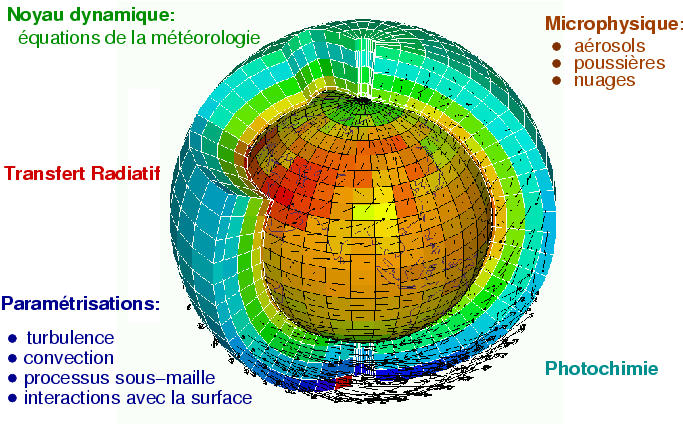Models we develop at LMD
Our team is dedicated to the development of Global Climate Models, mainly for terrestrial planet atmospheres. These models combine a General Circulation Model, i.e. a dynamical core with physical parameterisations for radiative forcing and subscale processes, with microphysical and photochemical modules.
The LMDZ5 dynamical core is based on a finite-difference discretization scheme
that conserves both potential enstrophy for barotropic nondivergent flows,
and total angular momentum for axisymmetric flows.
The model uses a leapfrog time integration scheme,
with a periodic predictor-corrector time-step.
Horizontal dissipation is done using an iterated laplacian, and represents the dominant problem when conservation of angular momentum is required.
A longitudinal filter is applied in polar regions (poleward of 60 degrees
latitude) to limit the effective resolution to that at 60 degrees.
A new dynamical core (DYNAMICO) is currently under development at LMD, based on an icosaedric grid.
Radiative transfer is a crucial aspect for each application to a planet's atmosphere. We have developed a versatile tool able to compute k-distributions for any kind of atmospheric composition, over a large range of atmospheric conditions.
